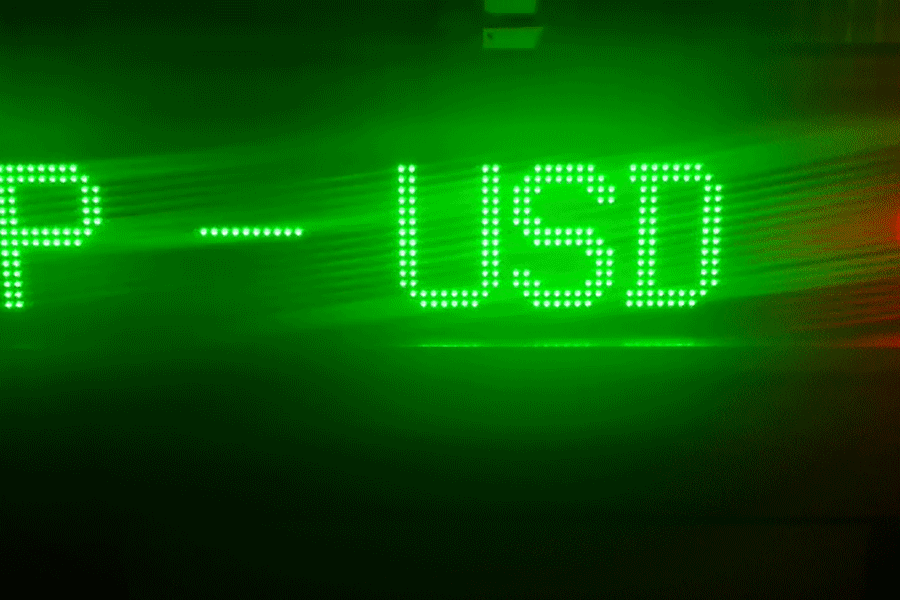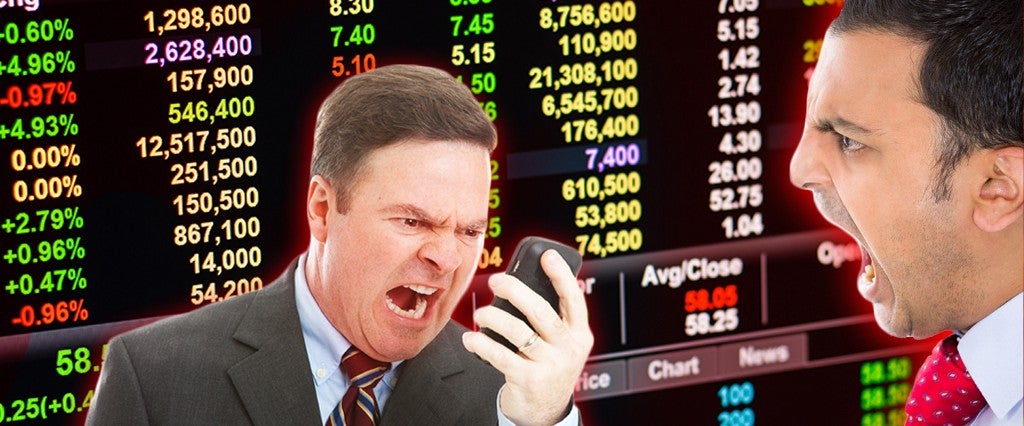For almost a decade now, testosterone therapy has been marketed as a fountain of youth for the no-longer-30-something man by a mix of doctors and hucksters who attempt to pass themselves off as doctors.
In fact, this alleged panacea for the soon-to-be middle-aged man is now a multibillion-dollar industry, with “low-T centers” almost as prevalent around the country as CVS or Walgreens.
So, of course, it’s big on Wall Street — and has been for a while.
“Keep Taking the Testosterone” was the title of a 2012 story in the Financial Times about a stream of Wall Street traders who had begun seeing Dr. Lionel Bissoon on the Upper West Side in the hopes of turning up the alpha in their male and becoming more competitive in the workplace following the recession, when many companies were sending underperforming employees into early retirement.
“They were on edge worrying that younger professionals would outperform them and leave them out of a job,” Bissoon tells me. These days he sees about 20 to 25 patients a week for testosterone therapy. “Approximately 90 to 95 percent of those patients work in the financial sector, have high-stress jobs and travel frequently. Most are upper-level management in their 30s and 40s.”

Bissoon wasn’t the only one putting the T in trader in 2012. Commercials for underarm testosterone gels like Axiron and AndroGel featured young white professional men reassuring the camera that their low energy and sex drive weren’t them — they were just a number! Cenegenics, an “age-management” company based in Las Vegas, opened a male hormone treatment center in the Trump Building near the New York Stock Exchange a month after the Financial Times story ran.
“If you’re going to be trading on Wall Street or dealing with large sums of money, you’d better be confident,” Bissoon told the FT. “The man who is wishy-washy is not going to be successful.”
Oh my god, thought Amos Nadler, an assistant professor of finance at at Ivey Business School at Western University, when he read the Financial Times article. These people don’t know what this drug actually does to them.
But Nadler did — perhaps more than anyone. He’d written his dissertation at the Center for Neuroeconomics Studies at Claremont University on testosterone’s cognitive effects on asset traders.
Inspired by writings from Robert Sapolsky, a primatologist at Stanford who studied testosterone’s effect on gorillas, Nadler was interested in how men make decisions and had a feeling testosterone played a key role. “We think of testosterone as the ‘bro hormone’ that makes you buff,” he explains. “I thought, There’s gotta be something more to it than just that. Hormones are so ancient. They must have evolutionarily guided objectives.”
So he conducted some research on how modern-day alpha males make decisions, and what effect testosterone has on those decisions. In all, Nadler studied 140 male traders in an experimental stock market. Eighty-four of them received Androgel — exactly the same testosterone drug Bissoon prescribed his Wall Street clientele — and another 56 traders were given a placebo gel with no testosterone.
“Lots of guys are taking testosterone on Wall Street to feel more alpha, but they don’t know how it affects their cognition,” Nadler says, whose findings are included in a new paper, “The Bull of Wall Street: Experimental Analysis of Testosterone and Asset Trading,” which he coauthored with four others (Peiran Jiao, Cameron J. Johnson, Veronika Alexander, and Paul J. Zak). The paper was recently accepted by Management Science and will be published later this year.
Nadler’s team conducted 17 sessions, each consisting of three rounds of 12 trading periods. Every trader was given a chart of the asset’s fundamental value over each round, similar to providing future earnings for a company in the next year. The graph below shows deviations of prices paid from fundamental value in the placebo (left) and testosterone (right) with the blue lines showing the averages across all placebo sessions and red for all testosterone sessions.
“Men given testosterone were paying way too much for something relative to its intrinsic value,” he explains, “while the placebo group was bidding below the fundamental value and trying to sell it above the fundamental value.”
In other words, testosterone fucked with their heads and turned them into trading maniacs. More evidence of foggy T-brain: In between trading periods, Nadler and his team asked everyone a series of questions, one of which was, “Do you think the prices were too low or too high?” The placebo group traded very close to what the value was and yet thought prices were too high. The testosterone group, however, was the exact opposite: They were psyched to be getting such a great deal. “It’s crazy how different their perceptions were,” Nadler says. “Imagine you saw a broken-down Buick at an intersection with its hazards on, and someone walked up and offered $100,000 in cash for it.”
Past bubbles and crashes have been explained by rational factors: The dotcom bubble of the late 1990s was about excessive speculation in a new economy. The housing market crash in 2008 was about credit default swaps and risky lending. But Nadler explains that prices also change due to unrelated, irrational factors — like sentiment, professional sports outcomes and even sunshine — all of which have biological connections.
For example, Lisa Kramer, a professor of finance at the University of Toronto, showed that the amount of daylight strongly influences share prices by analyzing different parts of the world at the exact same time. “If you look at Nordic countries versus what’s happening in L.A. or South America, the number of hours of sunlight in the day will affect how people trade,” Nadler explains. “Yet that should have nothing to do with the fundamentals of the company.”
And as Alex Edmans and his co-authors demonstrated in their 2007 paper “Sports Sentiment and Stock Returns,” when a soccer team loses an international sporting event, that country’s stock market has a drop on the next trading day. “There’s no direct effect on any stock fundamentals,” Nadler notes. “It’s not like a country’s earnings went down the toilet, a natural disaster struck or a huge lawsuit was leveled. The words biology or testosterone weren’t in the paper, but that’s likely what’s going on here — at least in part.”
Specifically, he explains, the “challenge hypothesis” is going on. When animals prepare for a challenge — like bucks going head-to-head during mating season — their bodies produce more testosterone to get ready for the fight. Testosterone reduces both anxiety and pain. If you’re about to go into a fight — whether you’re a buck or an MMA fighter — you don’t want to feel strung out, nor do you want to feel every punch to your face. So your body protects itself in preparation for the fight.
“If you win that fight, your body will produce even more testosterone,” Nadler says. That’s called the “winner effect,” in which your body creates more testosterone that allows you to prepare to square off against the next deer. On the other hand, if you lost the fight, you’d have a reduction in testosterone. Nadler says this phenomenon also occurs if you’re watching someone else fight — like sports fans. “When the Dodgers lost in the playoffs to the Cubs last year, theoretically Dodger fans had a drop in testosterone while Cubs fans released testosterone vicariously,” he explains.
https://www.youtube.com/watch?v=UTHlXb0PXh4
A high-T state isn’t like a cocaine binge — Nadler found that traders with elevated levels were neither abnormally overconfident nor risk-averse. Rather, he explains, it’s more a factor of heightened impulsivity and not thinking problems through fully — otherwise known as making boneheaded decisions. In another study he conducted, testosterone was found to make men less likely to realize when they’re wrong. To reach this conclusion, they asked men a series of questions, including:
A bat and a ball cost $1.10 in total. The bat costs $1 more than the ball. How much does the ball cost?
The first answer that comes to mind is likely 10 cents. But that’s incorrect because then the bat costs only 90 cents more than the ball. The correct answer is that the ball costs 5 cents and the bat costs $1.05.
“The error is always exactly this error because it’s the first thing that jumps into their head,” Gideon Nave, lead author of the study with Nadler, tells me. “To give the right answer requires inhibition of the automatic reflex. To arrive at the correct answer you have to detect that you’re giving the wrong answer and then work through systematically — analytically, arithmetically — to get the right answer.”
To illustrate shitty decision-making in the trading experiment, Nadler’s team gave everyone a chart of earnings to expect for the entire year. Would men in a high testosterone state pay attention to the fundamental value?, they wondered. “Testosterone made men not think through the situation,” Nadler explains. “A trader who is willing to pay $300 for something that’s worth $80 isn’t thinking through the fact that this stock is losing value and there’s virtually no way that you’re going to be able to resell it. They’re just trading like maniacs.”
Most concerning to Nadler about the Financial Times article was the potential real-life implications of his findings. “Instead of affecting markets with hundreds of dollars in our controlled lab, traders in real life move hundreds of millions to billions of dollars — sums with real gravity.”
He says it’s important we learn how our own biology affects our lives. When you’re in a high-testosterone state — after lifting weights, having sex with your girlfriend or watching your beloved Cubs win the World Series — you will think and act differently and probably not even know it. “Testosterone is more about instinctive functions known as the four Fs — fighting, fleeing, feeding and… mating — which is what the hormone was meant to do hundreds of millions of years ago.”
Simply put: “It wasn’t evolved to help you trade stock.”

